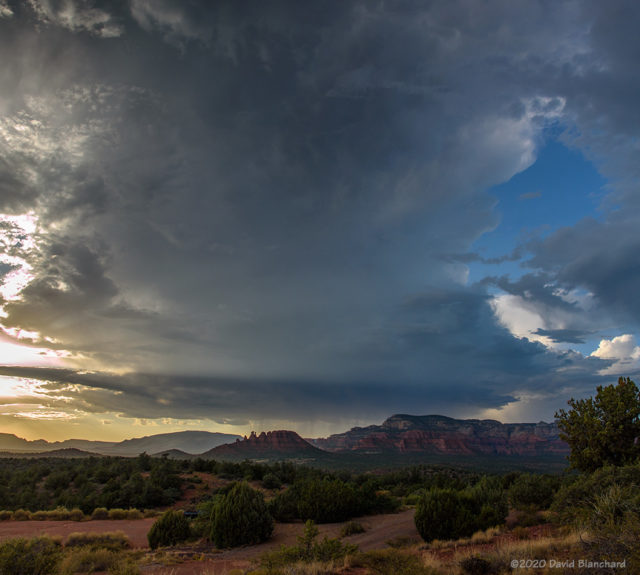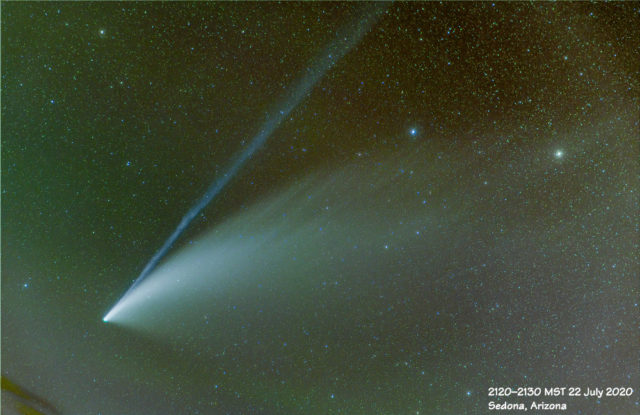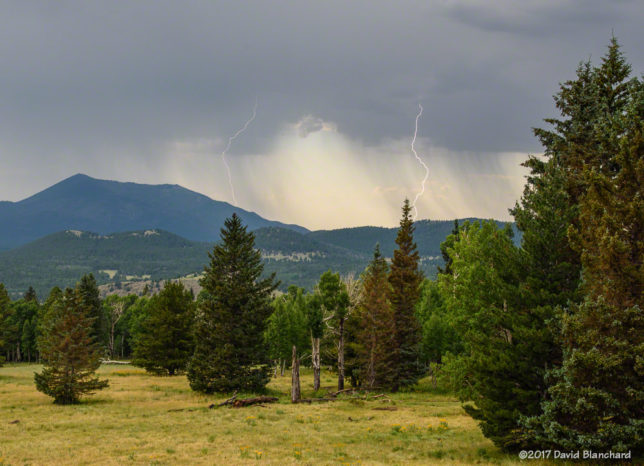We are entering Milky Way season—generally considered to be March through September in the northern hemisphere. In mid-March the Milky Way does not rise until well after midnight and the Galactic Center of the Milky Way is only about 25° degrees above the horizon by astronomical twilight.
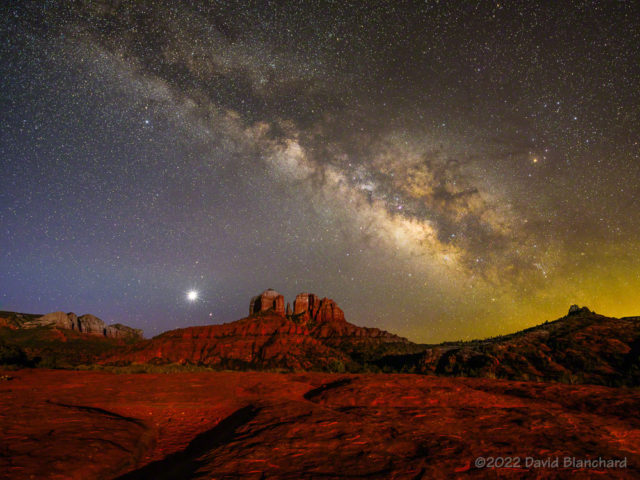
Accompanying the Milky Way was the waxing crescent Moon which was 77% illuminated on the morning of 13 March 2022. The Moon would set around 0413 MST and twilight did not start until 0516 MST.
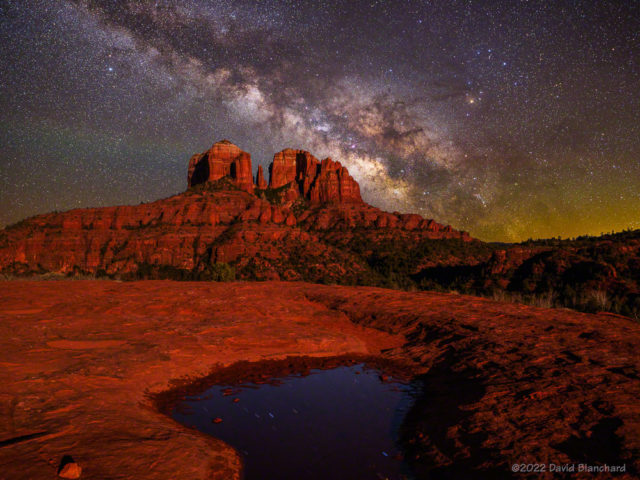
What this means is that I could photograph the landscape with the Moon illuminating it and then an hour or so later capture the Milky Way after the Moon had set and the sky was very dark.
I arrived with bright moonlight illuminating Cathedral Rock. I positioned the camera so that I could get some star reflections in the small—very small—pool of water. I also shot images without the water—just expanses of undulating red rock with alternating patterns of light and shadow.
Having finished that part of the show I had to wait until the Moon was at least a few degrees below the horizon allowing the sky to become very dark.
The Galactic Center of the Milky was about 16° above the horizon at moonset—which was just barely above the high point of Cathedral Rock. That wasn’t really the shot I wanted so I waited until it got higher.
Just before and after astronomical twilight the Galactic Center had risen to about 25° above the horizon. I shot a few images before twilight began to wash out the stars in the eastern sky. As a bonus, I was also able to capture the planets Venus and Mars just above the horizon.
The foreground images were shot at ISO 800, ƒ/5.6 and ƒ/8, and 120 seconds exposure with LENR (long exposure noise reduction) turned on. The star images were shot at ISO 800, ƒ/5.6, and 300 seconds exposure with LENR. Star images were taken with the camera mounted on an iOptron SkyTracker mount.
